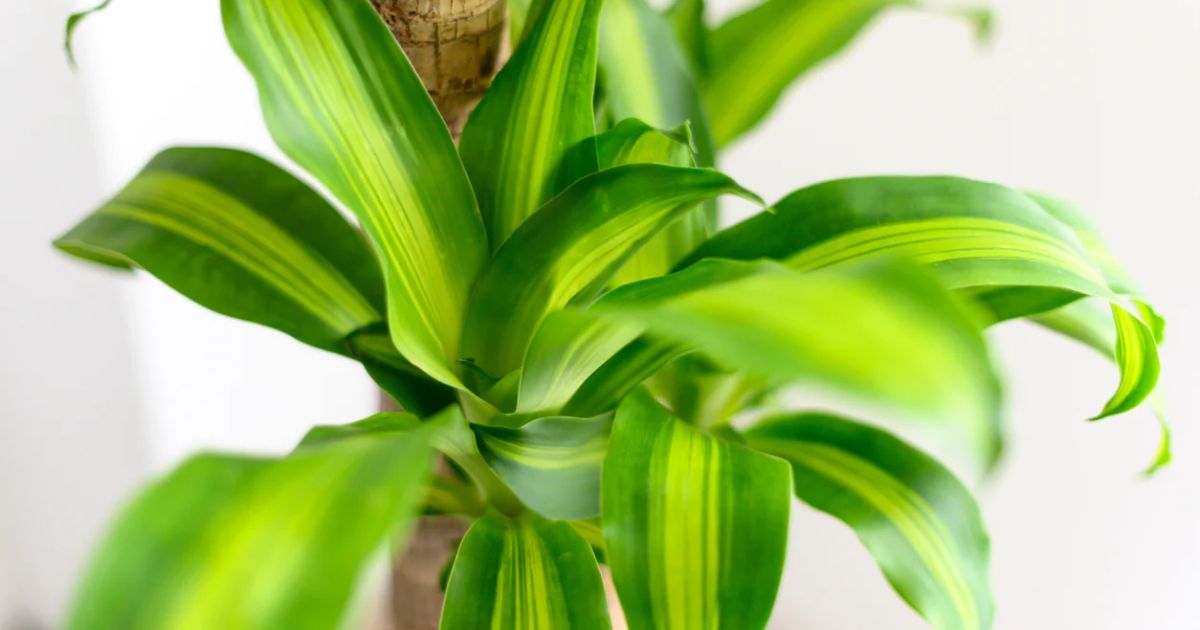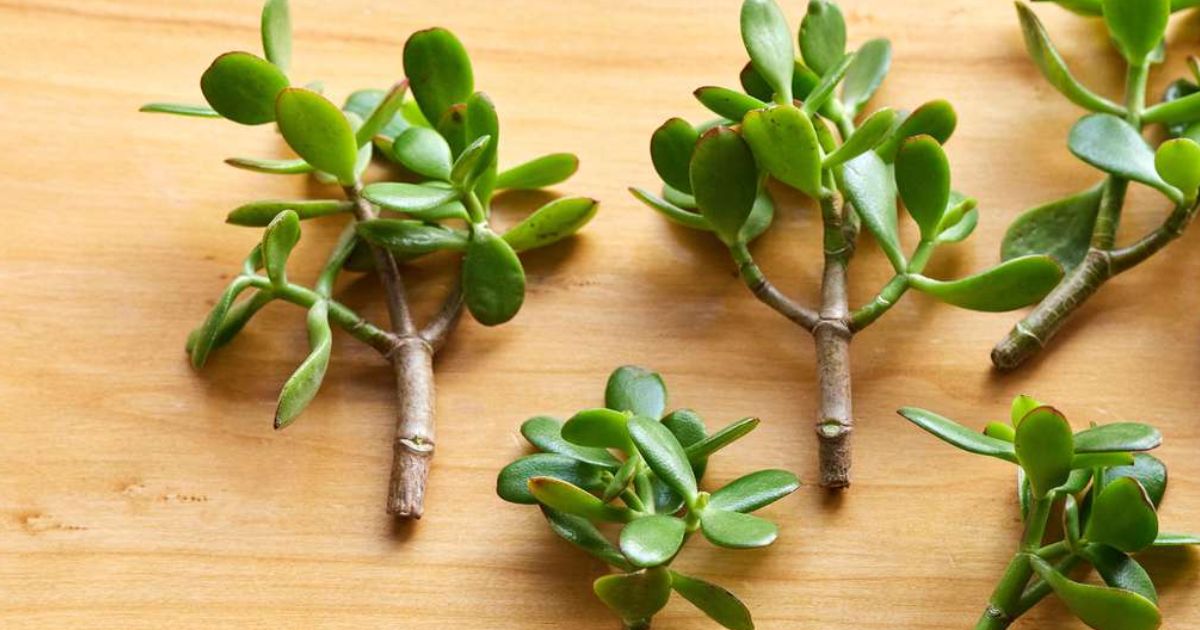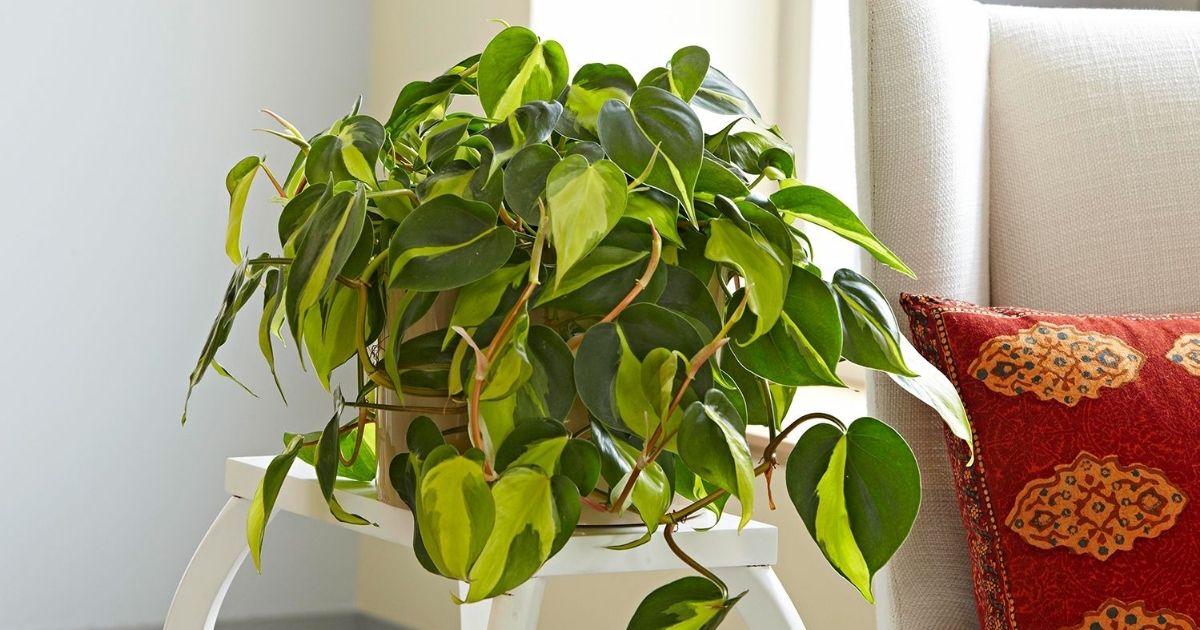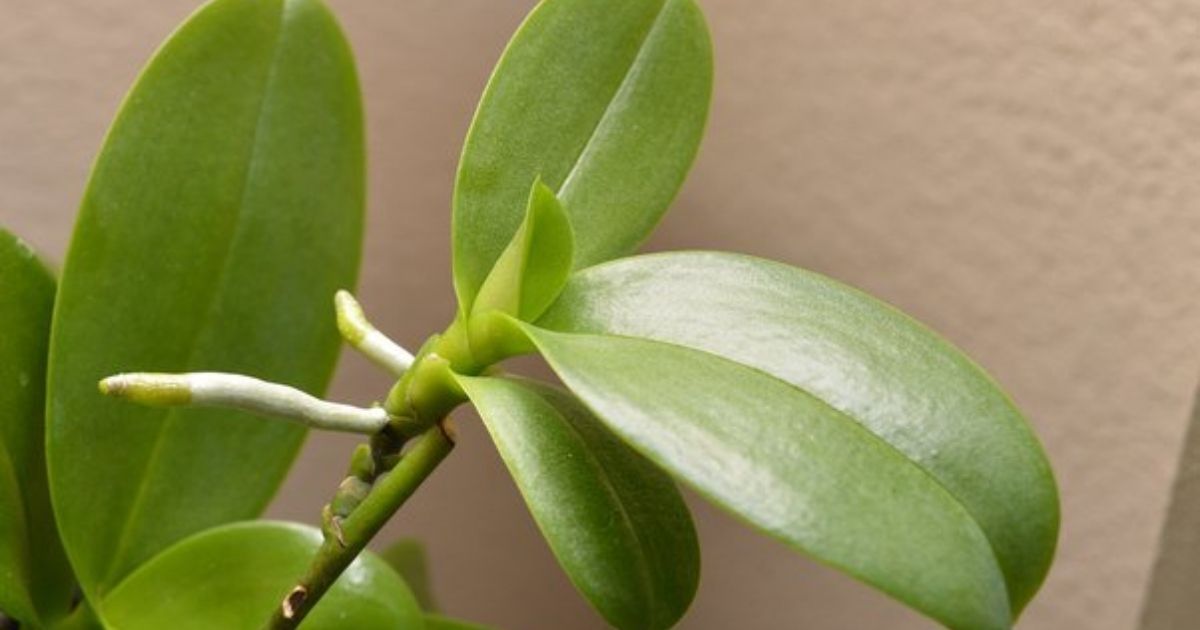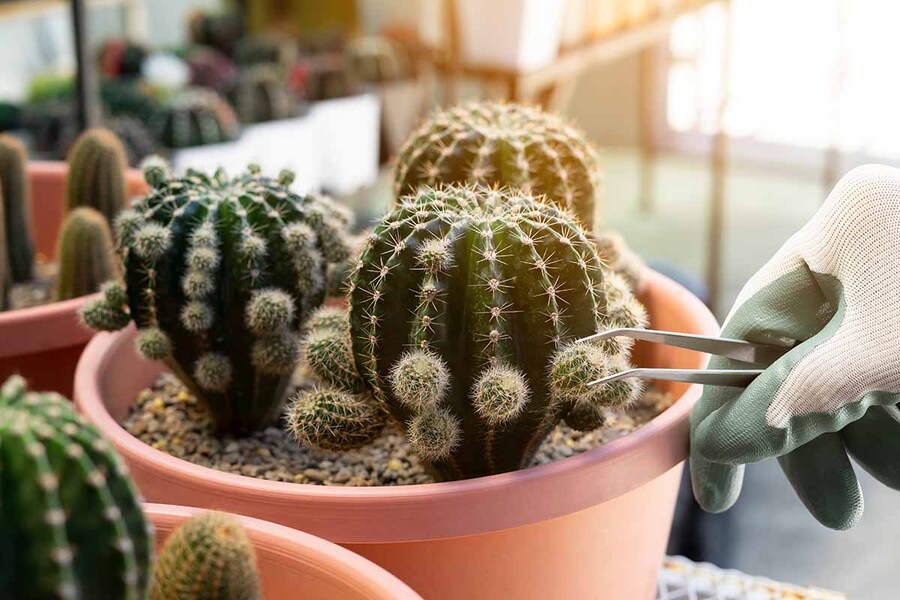What Is Hydroponics? 6 Types and How It Works
Hydroponics, the soilless cultivation method, is reshaping how we grow plants. Exploring "What Is Hydroponics? 6 Types and How It Works," we uncover the innovative techniques that redefine traditional farming. Join us as we unravel the secrets behind the science of Hydroponics and explore its various applications in modern agriculture.
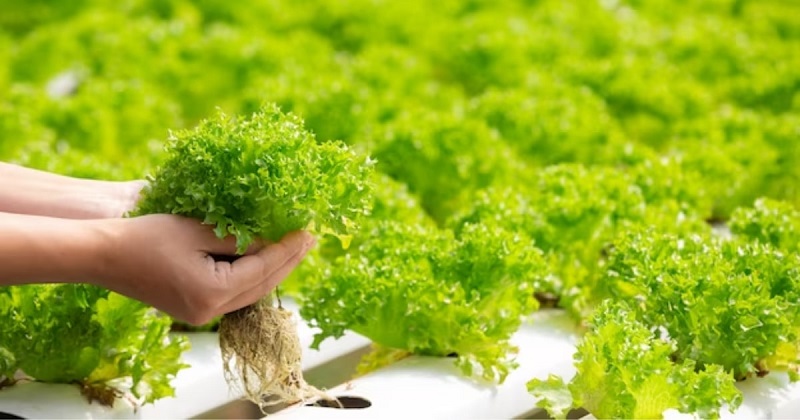
What Is Hydroponics?
Hydroponics means growing plants without soil. In this method, plants like flowers and vegetables are placed in unique material and given nutrient-rich water, oxygen. That helps them grow faster and produce better quality.
Unlike soil, where plant roots work hard to find nutrients, Hydroponics gives plants direct access to water and nutrition. They can use more energy to grow leaves, fruits, and flowers.
Plants grow through photosynthesis, using sunlight to make their food. In Hydroponics, plants don't need soil for this process. Instead, they need nutrient-rich water. By dissolving Hydroponic nutrients in water, we can give plants exactly what they need directly to their roots.
Hydroponics is efficient and good for the environment. It releases oxygen into the air, making our planet a better place to live. So, it's an innovative and effective way to grow plants.
Components of Hydroponics
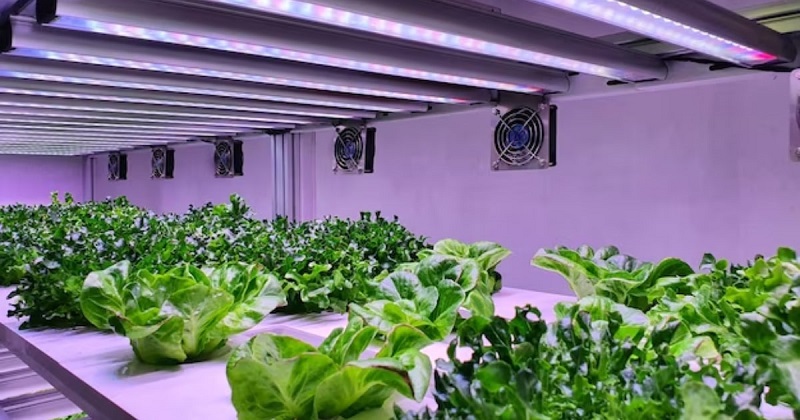
The components of hydroponics can vary depending on the specific type and its scale. However, here are the fundamental components commonly found in Hydroponics.
- Growing Medium: Although Hydroponics doesn't rely on soil, people often use a growing medium to support the plant roots and provide stability. Common growing mediums include perlite, vermiculite, coconut coir, Rockwool, or air (as in Aeroponics).
- Nutrient Solution: A carefully formulated nutrient solution containing essential macro and micronutrients benefits plant growth. This solution is mixed with water and distributed directly to the plants.
- Reservoir: The reservoir holds the nutrient solution as a container. It may also contain a pump for circulating the solution in some hydroponic systems.
- pH Control System: Maintaining the proper pH level of the nutrient solution helps plant nutrient absorption. pH control systems, such as pH meters and controllers, allow regulation and adjustment of the acidity or alkalinity of the solution.
- Water and Nutrient Delivery System: Different hydroponic systems use various methods to deliver the nutrient solution to the plant roots. That can include methods like nutrient film technique (NFT), deep water culture (DWC), drip systems, or Aeroponics.
- Light Source: While this might not be exclusive to Hydroponics, a controlled and adequate light source supports plant photosynthesis. Artificial lights like high-intensity discharge (HID) lamps or light-emitting diodes (LEDs) are commonly used in indoor Hydroponics.
Advantages of Hydroponics
- Increased Growth Rates: Hydroponic supplies give plants direct access to nutrients, promoting faster growth rates than traditional soil-based cultivation.
- Water Efficiency: Hydroponics typically uses less water than traditional soil-based farming because water is recirculated in many systems, reducing the risk of water wastage.
- Optimized Nutrient Levels: People can precisely control nutrient levels in hydroponic systems, ensuring plants receive the right balance of essential elements for optimal growth.
- Space Efficiency: People can set up Hydroponics garden systems vertically or in confined spaces (from grow tents to large gardens), maximizing available space use and allowing for higher plant densities.
- Reduced Risk of Soil-Borne Diseases: Hydroponics removes the reliance on soil, decreasing the chances of soil-borne diseases and pests and promoting healthier plants.
- Year-Round Cultivation: Hydroponic supplies, especially in controlled environments like greenhouses, allow year-round cultivation independent of seasonal variations.
- Customization and Precision: Hydroponic systems accurately control environmental factors, allowing growers to tailor conditions, including temperature, humidity, and light, to optimize plant growth.
While Hydroponics has several advantages, successful implementation requires careful monitoring, management, and a good understanding of plant nutrition to avoid issues such as nutrient imbalances or system failures.
6 Types Of Hydroponics
Hydroponics grows plants without soil, using nutrient-rich water solutions to supply essential minerals and nutrients to the plant roots directly. There are various types of hydroponics growing systems, each with advantages and disadvantages. Here are 6 basic types of hydroponic systems.
Nutrient Film Technique (NFT)
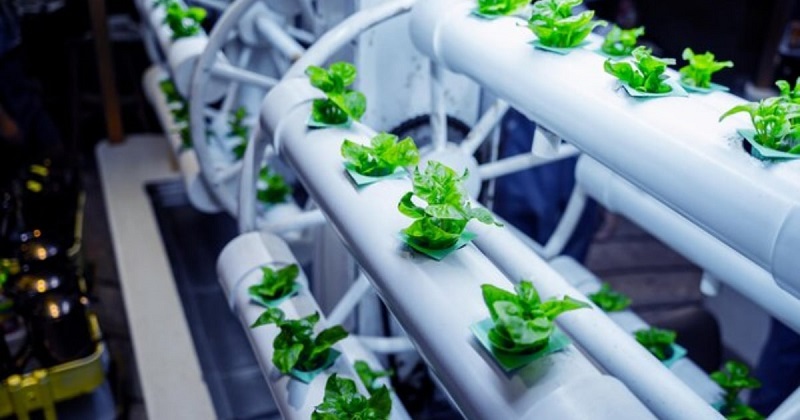
Nutrient Film Technique (NFT) systems in Hydroponics involve plants placed above tilted channels. A continuous flow of nutrient-rich water runs over the plant roots, draining back into a reservoir.
This system, popular in commercial setups, provides oxygen to the roots while efficiently delivering nutrients. Weekly refreshing of the nutrient solution is advisable. NFT suits lighter plants like lettuce and strawberries, but heavier crops like tomatoes may require additional support like trellises.
Pros
- Water and nutrient efficiency as the continuously circulating solution.
- Reduced water usage compared to traditional farming.
- Suitable for small spaces and easy to set up.
Cons
- Risk of system failure if the pump stops.
- Limited support for large or heavy plants.
Deep Water Culture (DWC)
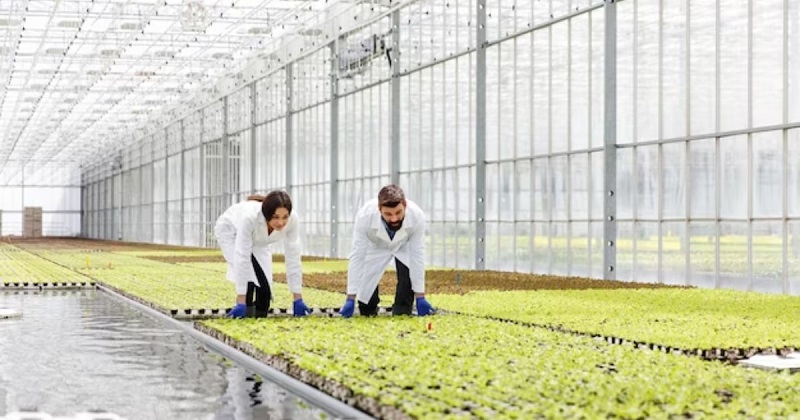
Deep Water Culture (DWC) hydroponics involves suspending plants in oxygenated water for easy and widespread cultivation. In this method, net pots hang over a nutrient-rich water reservoir, providing continuous access to water, nutrition, and oxygen for plant roots. Proper oxygenation is essential. It occurs when using an air stone connected to an air pump in the reservoir.
DIY DWC systems are easily set up with everyday materials, such as a bucket or aquarium, and a floating surface like styrofoam to support net pots while preventing root drying.
Pros
- Simple design and easy to set up.
- Efficient nutrient delivery directly to roots.
- Well-suited for growing larger plants.
Cons
- Requires continuous aeration, and failure can lead to root problems.
- It is challenging to manage pH levels.
Aeroponics
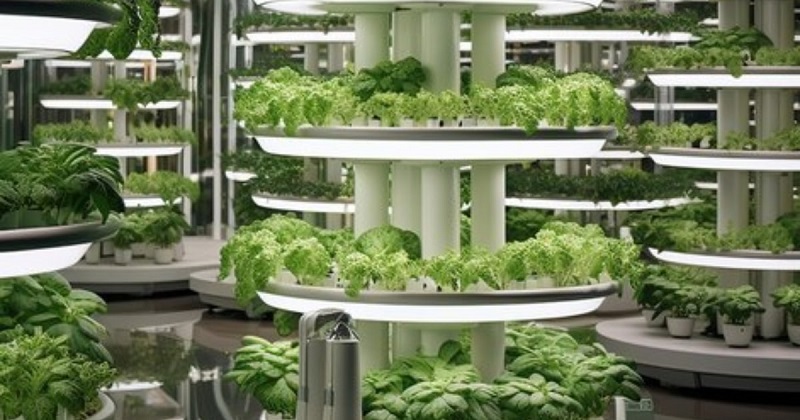
Aeroponics suspends plants, exposing roots to nutrient mist in enclosed towers without substrate media. Using 95% less water than traditional methods, Aeroponics promotes rapid root growth and allows efficient use of confined spaces.
This system is ideal for the year-round harvesting of various plants, including vine plants, nightshades, lettuce, herbs, watermelons, strawberries, and ginger.
Pros
- Excellent oxygenation of roots, promoting rapid plant growth.
- Water and nutrient efficiency.
- Suitable for a wide variety of plants.
Cons
- Prone to system clogs.
- Require careful monitoring and maintenance.
Drip Systems
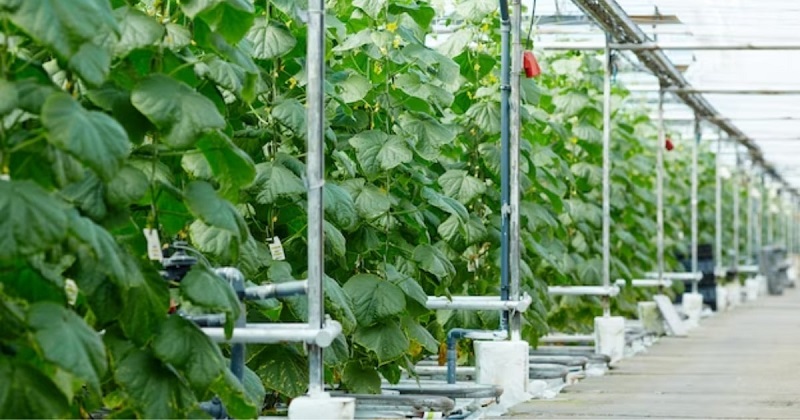
In hydroponic drip systems, nutrient-rich solution is pumped through tubes to individual plants, slowly dripping into the growing media. Widely used by growers, these systems come in two types: recovery (expected for smaller setups, recycling excess water) and non-recovery (preferred by commercial growers, allowing excess water to drain out).
We can minimize water waste in non-recovery systems through precise delivery, timers, and feeding schedules. In recovery systems, monitoring pH fluctuations and periodic replacement of oversaturated growing media are essential.
Pros
- Versatile and adaptable to various plant types.
- Precise control over nutrient delivery.
- Well-suited for larger plants.
Cons
- Potential for clogging in drip emitters.
- Variability in nutrient distribution.
Flood and Drain (Ebb and flow)
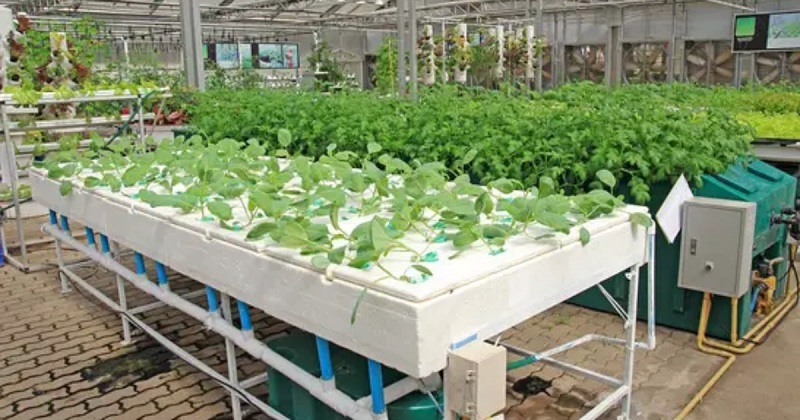
Ebb and flow Hydroponics flood a grow bed with a nutrient solution using a timed pump, promoting quick growth. This versatile system allows intermittent exposure to water, allowing for better oxygenation.
Known as flood and drain, it accommodates various plants and sizes, from root vegetables to tomatoes and peppers. Trellises can be attached, and popular growing media like "grow rocks" and clay pebbles ensure cleanliness and efficient drainage.
Pros
- Balanced nutrient absorption and aeration.
- Versatile and suitable for various plants.
- Less prone to pump failures compared to NFT.
Cons
- Potential for uneven nutrient distribution.
- This type requires careful timing and monitoring.
Wick Systems
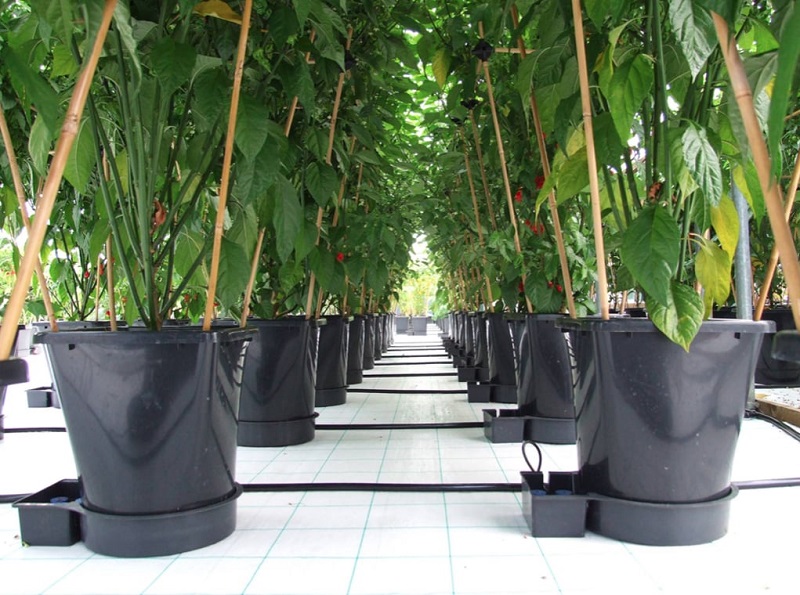
In the wick system, there is a reservoir that brings nutrients to the bottom of a Pot that is full of, for example, Coconut coir. From the bottom, the nutrient will wick upwards and eventually reach the plant's root zone, feeding it.
It works best with porous media like coco coir, perlite, or vermiculite. If running slowly, it can be fixed with an air stone and pump for added oxygenation, making it suitable for slower-growing plants.
Pros
- Simple and low-cost setup.
- There is no need for pumps or electricity.
- Suitable for small-scale or hobbyist gardening.
Cons
- Limited to smaller plants with low nutrient requirements.
- Slower growth compared to other systems.
These hydroponics growing systems vary in complexity, cost, and suitability for different types of plants. Selecting a system relies on factors like space availability, budget constraints, and the specific requirements of the plants.
How Does a Hydroponic System Work?

Hydroponic growing systems give plants precisely what they need for ideal growth: the proper nutrients, water, and environmental conditions. It's like creating a perfect home for plants. Unlike traditional gardening, Hydroponics allows us to control factors like temperature, light, and pH levels precisely.
In Hydroponics, plants don't grow in soil. Instead, they get their nutrients from a water solution tailored to their needs. We can control how much Hydroponic grow light they get and for how long. This careful control helps plants grow faster and healthier.
The significant advantage is that we avoid many problems with outdoor gardening such as soil-borne issues, hungry animals, and pests. Some pests can target hydroponically grown plants (spider-mites, aphids, etc), but it's not common.
Also, without the resistance of soil, plants can increase. Plus, since we don't need pesticides, the fruits and veggies produced are healthier and better quality. It's like giving plants a perfect environment to thrive in.
Frequently Asked Questions
What is Hydroponics in simple terms?
Hydroponics is a method that cultivates plants without soil. Instead, plants are grown in nutrient-rich water solutions, providing the crucial minerals and nutrients needed for growth. This soil-less technique allows precise control over the plant's environment, leading to more efficient and controlled growth.
What are three things that we can't grow hydroponically?
Hydroponics is versatile. It can be applied to all kinds of plants ranging from large fruit trees (e.g., apples), root vegetables with bulbs (e.g., onions), crops with specific growth requirements to small-scale plants.
What are the five disadvantages of Hydroponics?
Five drawbacks of Hydroponics include:
- High initial costs
- The need for technical knowledge
- Vulnerability to system failures
- Potential for disease spread
- Dependency on electricity for energy-intensive systems
- Is Hydroponics healthy?
Hydroponically grown produce can be healthy when well-managed, with controlled nutrient delivery and reduced pesticide use. The nutritional quality depends on specific crops, chosen nutrient solutions, and overall grower practices.
In exploring "What is Hydroponics? 6 Types & How It Works," we've uncovered a transformative, soilless approach to plant cultivation. Hydroponics stands as a beacon for future agriculture, offering a sustainable and efficient solution. With tailored environments and innovative techniques, it's clear that Hydroponics is reshaping how we grow plants for a greener and more productive tomorrow.
